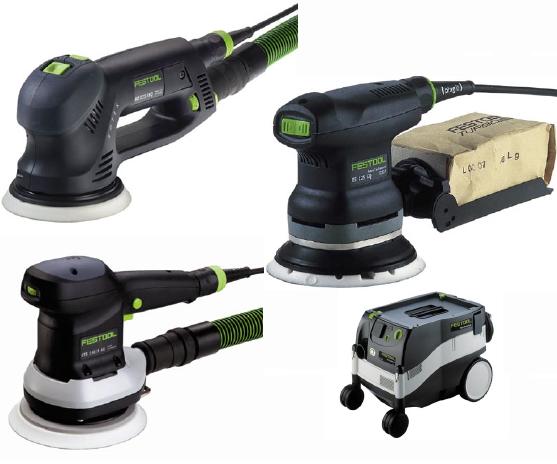

Three of a Kind
Festool's Rotex RO125, ETS 150
and
Random Orbit Sanders
by
14 Apr 2006
There is usually one aspect of any profession or hobby that is less pleasurable than the rest. If you're like me, in woodworking or remodeling that task is sanding. Now I'm not about to tell you that a Festool sander is going to make you like to sand or that one will even make sanding more pleasurable but after using these sanders which were provided by Festool USA, I can tell you that sanding will be easier, less tiresome, cleaner, faster and use fewer sanding disks. Also check out my companion review to this of the Festool CT22E dust extractor.
As with all of my reviews I endeavor to provide as much detailed information as I can so that you will be able to make an intelligent purchase decision and not be surprised when you open the box. Click on any picture to enlarge it.
What's in the Box:
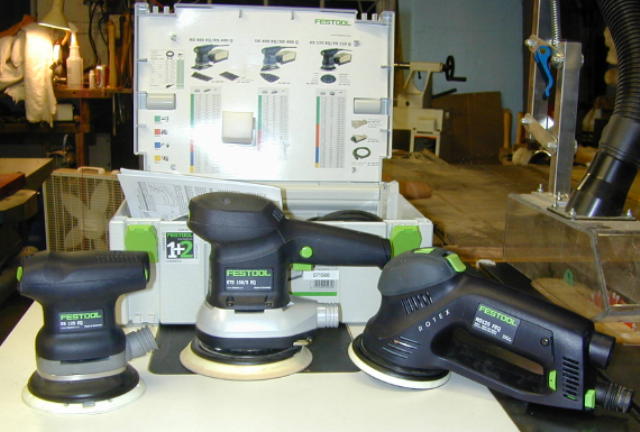 The
sanders I've been using for the past six months are (from left to right) the ES
125, 5" Random Orbit palm sander, the ETS 150, 6" Random Orbit sander and the
Rotex 125, a 5" RO/Rotary sander.
The
sanders I've been using for the past six months are (from left to right) the ES
125, 5" Random Orbit palm sander, the ETS 150, 6" Random Orbit sander and the
Rotex 125, a 5" RO/Rotary sander.
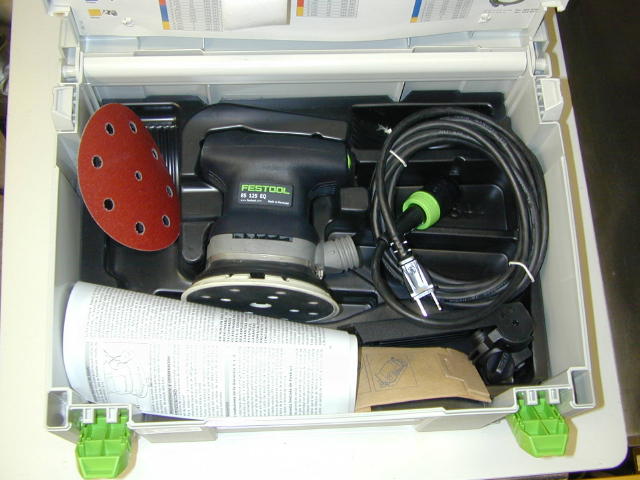 All
of the sanders come packaged in a Systainer (photo at left) with the tool
instructions, a single sanding disk, the detachable "Plug It" power cord and in
the case of the ES 125 and ETS 150, a dust bag and attachment.
All
of the sanders come packaged in a Systainer (photo at left) with the tool
instructions, a single sanding disk, the detachable "Plug It" power cord and in
the case of the ES 125 and ETS 150, a dust bag and attachment.
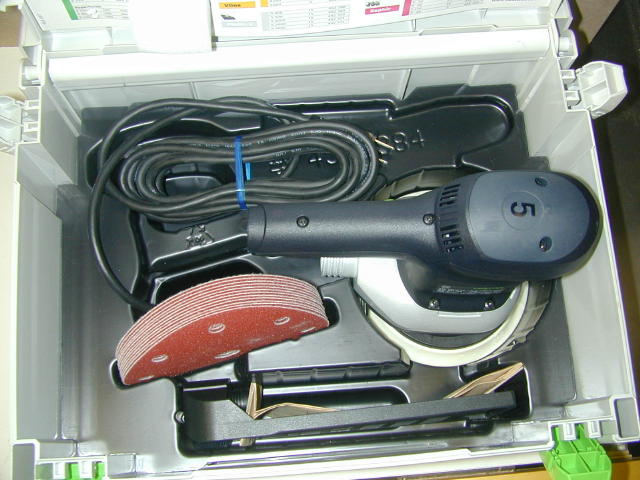 The
Systainers are designed to be the only storage any Festool tool needs, be it in
the shop or on the job site. The Systainers are designed to stack and lock
to each other and have molded inserts to store your sanding disks and
accessories to bring with you to the job site.
The
Systainers are designed to be the only storage any Festool tool needs, be it in
the shop or on the job site. The Systainers are designed to stack and lock
to each other and have molded inserts to store your sanding disks and
accessories to bring with you to the job site.
Systainers are not your typical shop
cluttering molded case. They are an integral part of the complete Festool
System.
The Sanders: ETS 150/5
Let's start with what I think is Festool's flagship sander, the 6" (150mm) ETS 150/5. The "/5" in the part number indicates that this sander has a 5mm stroke (3/16"). There is also a "/3" (1/8") model and we'll talk about the stroke in the testing section.. As stated earlier, in addition to the Systainer, this sander comes with what you see at right, the sander, power cord, sanding disk and dust bag. If you're new to Festool I'll give you a hint, put the dust bag away. You're going to want to use all of Festool's sanders with a vacuum attached. Not only do they sand better with a vacuum attached, the paper lasts longer and of course there is less of a mess.
Specifications: ETS 150/5
Power consumption: 310 Watts / 2.6 amps 120 v AC
Pad diameter: 6" (150 mm)
Speed: 6000 - 10500 orbits per minute
Sanding stroke: 3/16" (5 mm)
Dust extractor connection: 1" (27 mm)
Weight: 4 lbs. (1.85 kg)
The ETS 150 is a variable speed sander with a
locking trigger located on the grip (left). The speed is selected using a
thumbwheel mounted in the top front of the sander (right).
Features:
Because the ETS 150/5 and the ETS 150/3 are identical with the exception of the stroke, Festool has marked the top of the sander with either a "5" or a "3" to indicate the difference.
A convenient feature of all the sanders is the
"Plug-It" detachable power cord. This removable cord makes storage simple
and switching tools easier. If you're sanding using the ETS 150 for
instance and want to switch to say the palm ES 125 simply swap the sanders at
the tool end of the cord and vacuum hose.
Dust Bag:
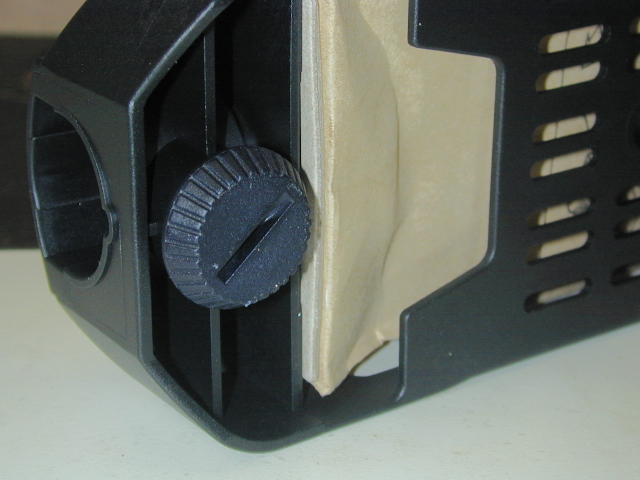 The
paper dust bag attaches like many full size vacuum bags. Just push the bag
over the neck of the attachment.
The
paper dust bag attaches like many full size vacuum bags. Just push the bag
over the neck of the attachment.
The dust bag attachment slips over the Sanders port and is secured by tightening a thumbscrew (above right and at left).
The dust bag works well but not as well as
when the sander is connected to a vacuum.
[Page 1][Page 2] [Page 3] [Next]